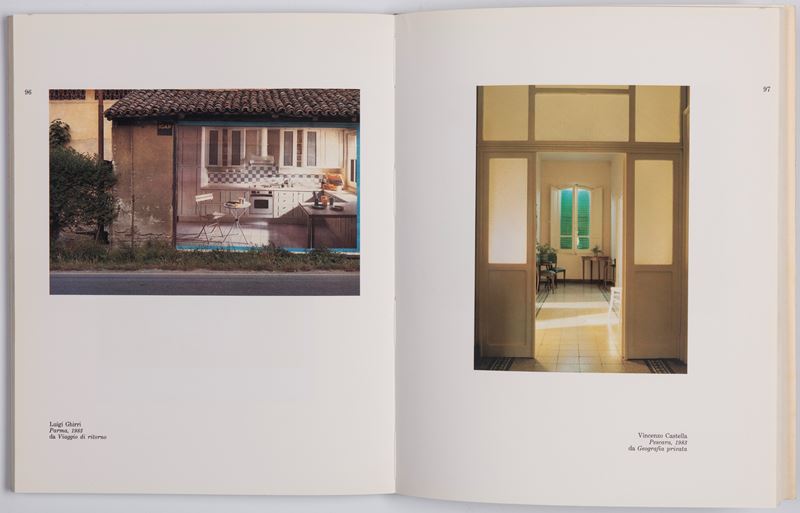Photobook
cm 26 x 21 x 1,3 | 10.2 x 8.2 x 1 in.
First Edition Il QuadrantePhotographs of: Barbieri, Basilico, Battistella, Castella, Cavazzuti, Chiaramonte, Cresci, Fossati, Garzia, Guidi, Ghirri, Hill, Jodice, Leone, Nori, Sartorello, Tinelli, Tuliozi, Ventura, White
When Luigi Ghirri conceived, together with the collaboration of Pina Belli D’Elia, Gianni Leone, and Enzo Velati, a project aimed at reflecting on the Italian landscape, his intention was, on one hand, to move beyond the traditional, clinical Alinari-style that was in many art history books, and on the other hand, to break away from the increasingly unbearable rhetoric of Bel Paese. Not everyone understood that what was about to be published would soon become a fundamental point of reference, indeed, a true manifesto for a new Italian school of landscape photography: more collective in its diversity of perspectives than the Düsseldorf School, equally philosophical but more aesthetically engaging than the American Dialectical Landscape. “Viaggio in Italia” quietly emerged in 1984, published by a courageous but relatively unknown publisher, Il Quadrante of Alessandria, and with a first exhibition held at the Provincial Art Gallery of Bari. They were the ones who believed in this project, alongside the local Arci Media Lega Fotografia, whose coordinator, Giancarlo Renzetti, wrote on the book's cover that it is “the mirror through which photographers belonging to the first generation, that in Italy impact on television imagery, capture the transformed reality of our country.” The cover playfully features an image reminiscent of the geographic maps of Italy that once hung in elementary school classrooms, but inside, it unfolds as a sequence of images by photographers, some of whom would later gain significant recognition, while others would eventually move away from the field but remain attached. Alongside Ghirri himself were Olivo Barbieri, Gabriele Basilico, Giannantonio Battistella, Vincenzo Castella, Andrea Cavazzuti, Giovanni Chiaramonte, Mario Cresci, Vittore Fossati, Carlo Garzia, Guido Guidi, Shelley Hill, Mimmo Jodice, Gianni Leone, Claude Nori, Umberto Sartorello, Mario Tinelli, Ernesto Tuliozi, Fulvio Ventura, and Cuchi White. They did not propose “neither languid Venices nor sad Neapolitan slums,” but rather “the intention to reach a kind of knowledge that is not a cold scientific category, but an adventure of thought and vision,” to use the words of their presentation.











